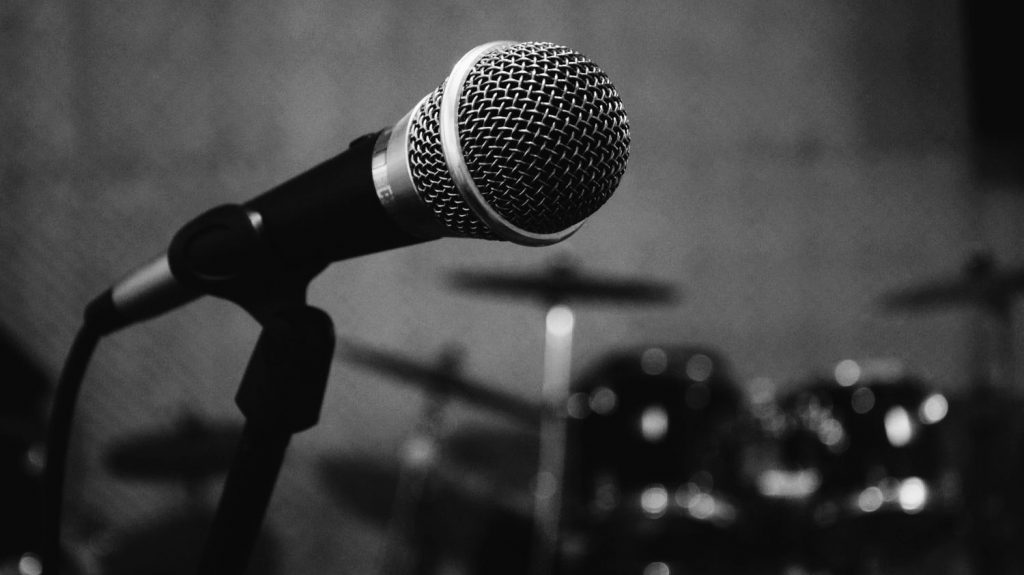I went to hear the most recent American Nobel laureate in literature last fall. It wasn’t a reading. As has become his norm, Bob Dylan did not speak at all, even to introduce the members of his band (which is a shame, because they’re outstanding). All he did was sing, in that never-pretty voice that has become more gnarled and, if possible, more expressive with age.
My 19-year-old son kept saying, as we watched from the top balcony of the historic Morris Performing Arts Center in South Bend, IN, “He seems so old.” At 78, Bob totters a bit, from his keyboard to a microphone on a stand, sometimes picking up a harmonica on the way (the audience goes wild). But mostly, he sings. He seems even more now, as I recall someone saying in No Direction Home—the excellent Martin Scorsese documentary about his early career—like a person concentrated into just a voice. And what he does with that voice is in some ways the most powerful example of literary experience I know.
Bob’s incomparable lyrics work well on the page, of course, and even better in recordings. Being able to reread and relisten allows us to appreciate, for instance, how densely interwoven his words are with traditions from American popular song (what the Nobel committee cited with its award), classics such as Virgil and Dante, and, above all, the Bible. But rather than discussing any particular songs (Pod Dylan is good on that), I want to explore how his live performances add further dimensions to his poetry and to what he is as a poet.
I’ve noticed a rough correlation between how old a song is and how hard it is to recognize when Bob sings it in concert. He not only slurs the words of the oldest hits a little more, but often changes the melody. Or, if the tune is the same, he shifts the rhythm and intonation (often drastically) from familiar recordings. I think he wants to make people listen harder.
The literary critic Northrop Frye locates poems on a continuum between two basic literary forms (well represented in Old English): charms on the one end, and riddles on the other. Charms lull an audience into a receptive state, whereas riddles elicit active engagement. Most songs tend toward the charm side and operate on a largely emotional level. Indeed, the word “charm” comes from the Latin carmen, meaning a song.
Bob is not charming. He doesn’t want his old songs to become mere incantations, occasions for nostalgia or any sort of cheap enthusiasm, much less a means of manipulation. He plays them—plays with them—so as to keep them riddling, enigmatic in the fullest sense: asking to be puzzled over in order to yield new insight into, and compassion for, the enduring mysteries of human experience.
With his newer, less familiar songs—which I tend to like even more—the lyrics and tunes are easier to recognize, but the instrumental arrangements are quite different from the recordings. Perhaps he picks the songs for each tour’s set list that he feels he has a better idea of how to play than when he recorded them. Perhaps he chooses the ones he thinks the band could have some fun with. Whatever the reason, the band’s inventiveness, far from making the lyrics just part of the sound, refreshes their meaning.
Plus, whether old or new, Bob might always change some words or try a new verse, which also keeps the audience on our toes. He is always stretching himself—even at 78—to honor the written words in new ways and draw more out of them.
When he plays other people’s songs—the 2017 show I saw in Grand Rapids included some Sinatra standards he has recorded in recent years—the words are even more recognizable. He clearly cares about the words of songs often known mainly for their tunes. On the album Christmas in the Heart, he plays songs worn smooth with time, both sacred and secular, in a way that makes me hear the words as I never have before. He sings them as poems, not just lyrics.
“Lyric” as a literary term comes from ancient Greek: a kind of poem sung or chanted to a lyre, marked by its first-person perspective, in contrast to the epic. Lyric poetry still, whether in the first person or not, tends to be seen as expressing the poet’s feelings, even more so when being sung. What, then, to make of Bob’s lyrics, especially when you are there with him in the room? I think it would be a mistake to go looking for Bob the man. He does not speak for himself. He gives voice to many, not as a mass but as a gallery of particular individuals—especially suffering individuals (the musical tradition he draws from most is probably the blues).
Somehow, even in concert, maybe especially in concert, Bob himself disappears. Instead, he projects richly textured, essentially human predicaments. He asks, to quote one of his most famous songs, “How does it feel…?” He calls out our own and each other’s experiences so that we can hear them better, learn to pay better attention. We need literature, we need songs, we need the voices of poets, to help us listen better to each other. To adapt the beautiful tribute that closes his most recent album of original songs, 2012’s amazing Tempest: roll on, Bob.
